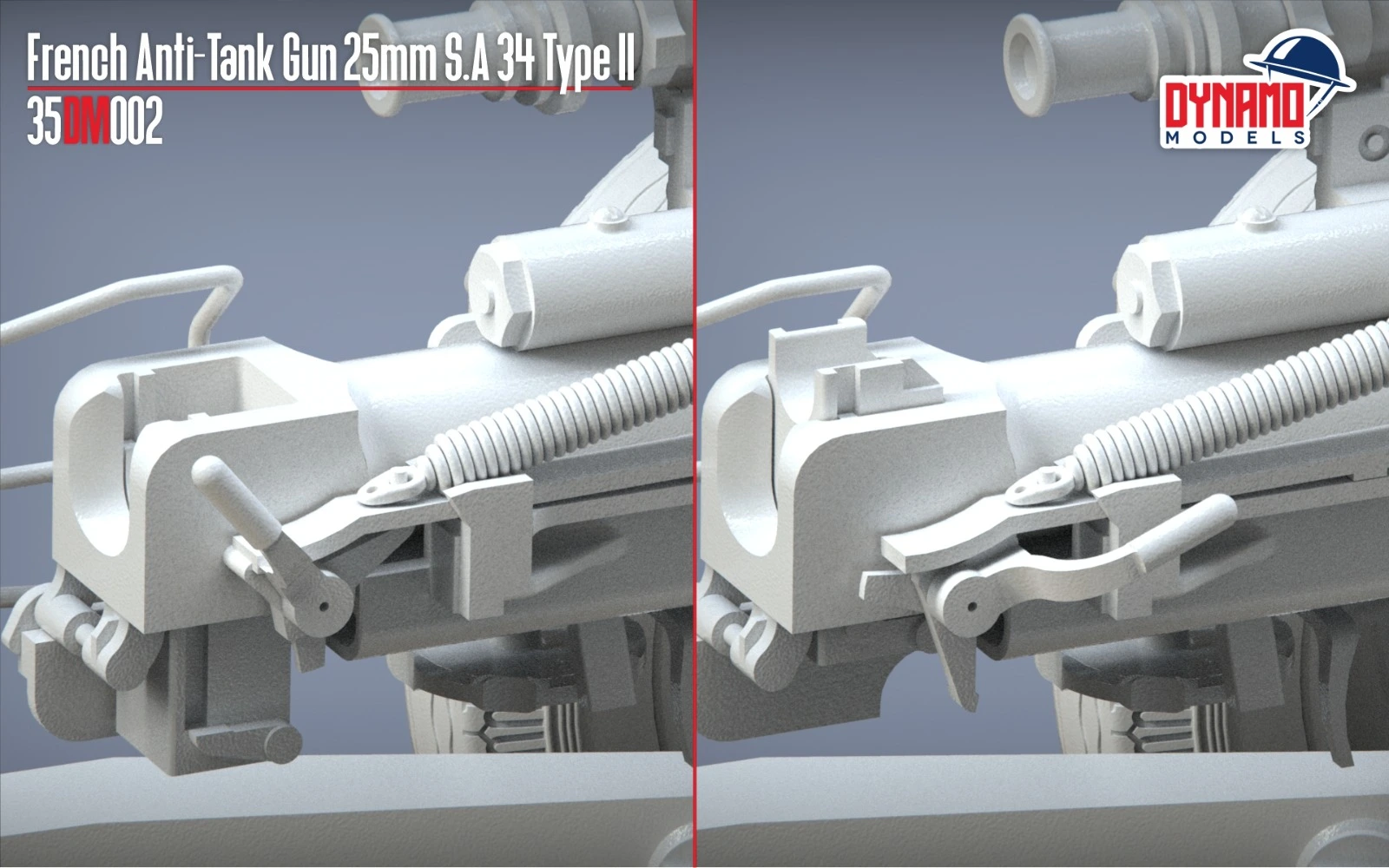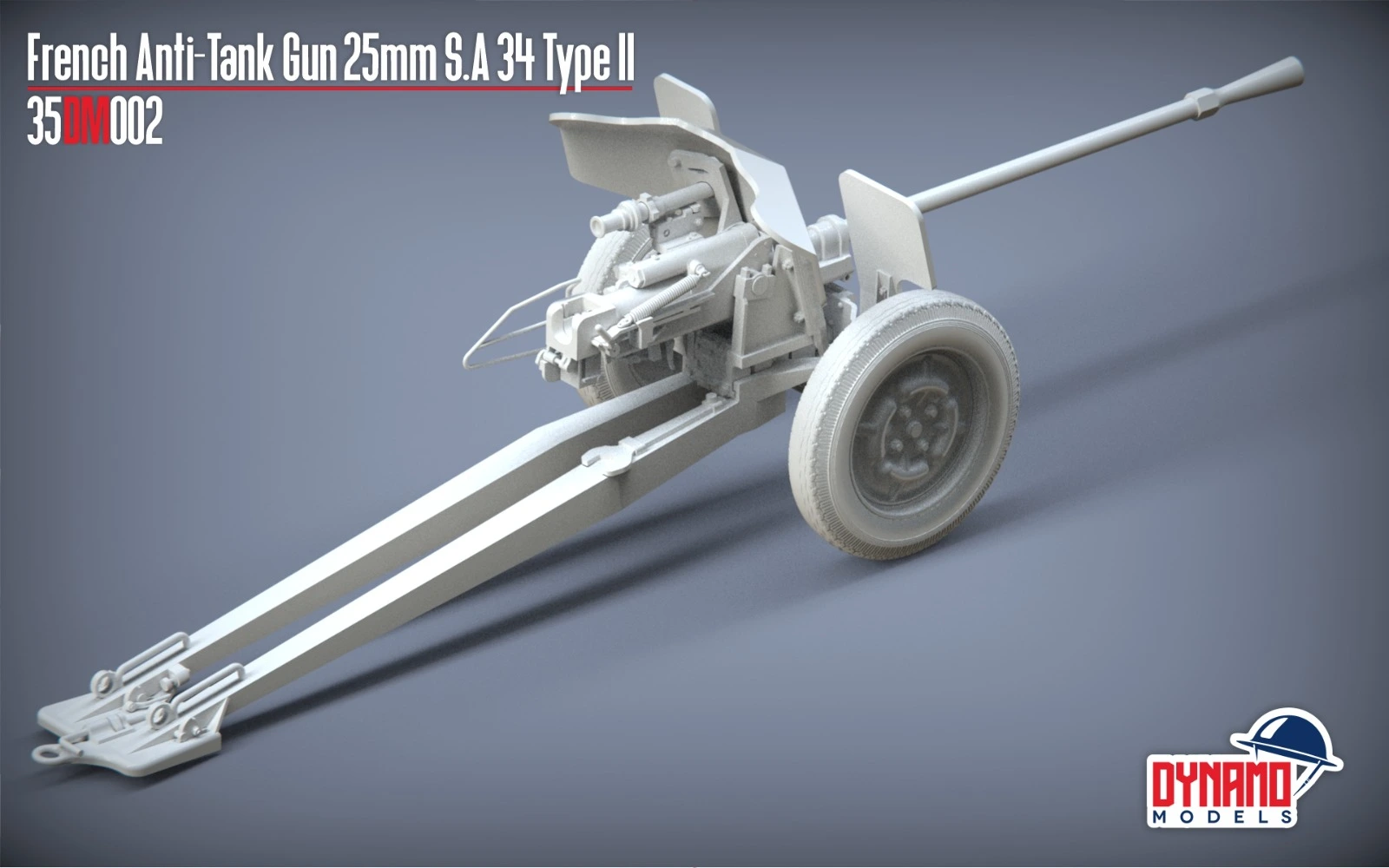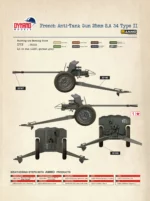French Anti-Tank Gun 25mm S.A 34 Type II
21,95€
Inside of the box you can find a highly detailed plastic kit of the French Anti-Tank 25mm Gun S.A 34 type II, The mould for this kit is brand new by Dynamo Models
The Standard version include:
-Plastic kit
-Decals printed by Cartograf
-3D printed parts
This item needs to be assembled and painted. Glue and paint are not included.
25mm Hotchkiss anti-tank S.A34:
The 25 mm Hotchkiss anti-tank gun of 1934, formally designated as the Canon de 25 mm semi-automatique modèle 1934, was a light anti-tank weapon developed by the French arms manufacturer Hotchkiss. Used primarily by the French Army during the early years of World War II, the 25 mm Hotchkiss was an innovative solution to the rising threat of armored vehicles in the interwar period. Known for its lightweight and relatively high rate of fire, it was deployed in both defensive and offensive roles across a variety of units, including infantry, cavalry, and motorized units. Although it would eventually be outclassed by heavier armor, the 25 mm Hotchkiss remains a notable example of early anti-tank gun design.
Design and Specifications
The Hotchkiss 25 mm anti-tank gun was designed with mobility and versatility in mind, weighing approximately 480 kilograms. This lightweight design allowed it to be easily towed by light vehicles, horses, or even manually moved by a crew of two to three soldiers, making it ideal for rapid deployment and repositioning. The gun featured a compact, single-barrel design with a semi-automatic breech-loading mechanism, enabling a high rate of fire of around 15 rounds per minute.
The gun fired a 25×193.5 mm cartridge with an armor-piercing projectile that had an effective range of 300-400 meters against lightly armored vehicles. Under ideal conditions, the armor-piercing rounds could penetrate up to 40 mm of armor at 100 meters, making it effective against the early German Panzers and other light armored vehicles of the time. However, the effectiveness of the gun diminished significantly against more heavily armored tanks introduced later in the war, as it lacked the penetrating power needed for thick armor.
Deployment and Operational Use
When World War II broke out in 1939, the 25 mm Hotchkiss anti-tank gun was deployed widely by French forces, with some units also supplied to the Belgian and Dutch armies. It played a crucial role during the Battle of France in 1940, where its portability allowed French forces to employ it in flexible defensive tactics. The gun was often used in ambush positions along likely tank routes or to reinforce key defensive lines. Its compact design and ease of camouflage helped make it an effective surprise weapon, inflicting damage on lightly armored vehicles and even unarmored support vehicles, such as supply trucks.
Despite its initial effectiveness, the 25 mm Hotchkiss struggled to keep pace with advancements in tank armor. As German tanks with thicker armor appeared, like the Panzer III and Panzer IV, the gun’s light projectile often failed to penetrate, limiting its effectiveness on the modern battlefield. In response, French forces later supplemented their anti-tank capabilities with heavier artillery.
Legacy and Impact
Although outclassed later in the war, the 25 mm Hotchkiss anti-tank gun exemplified the interwar focus on light, mobile anti-tank systems for infantry support. Its relatively high production numbers, ease of transport, and reliability allowed it to continue service in occupied Europe and beyond, even being utilized by German forces after the fall of France. As one of the most widespread early anti-tank weapons, the Hotchkiss gun represents a key step in the evolution of anti-tank warfare, illustrating the limitations and rapid progression of anti-armor technology in the early 20th century.
| Poids | 0,3 kg |
|---|---|
| Material |
Plastic |
| Country |
France |
| Period |
WW2 |
| Scale | |
| Brand |



























